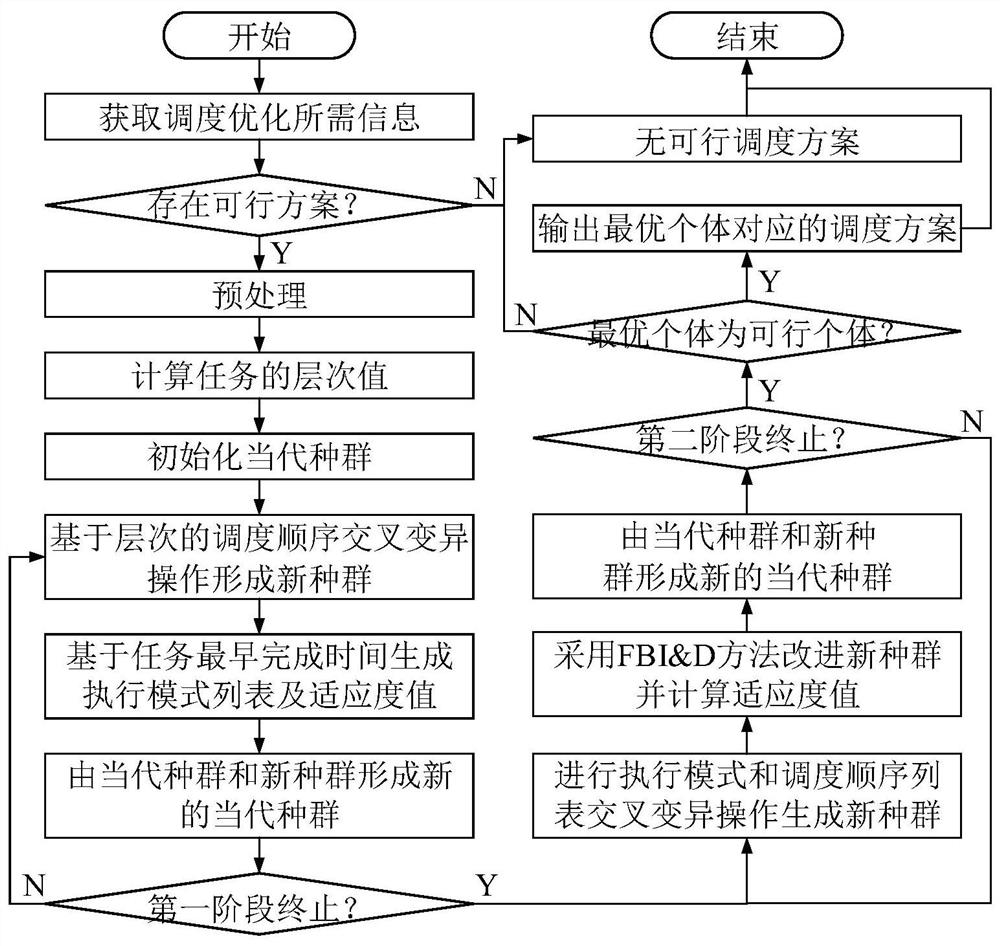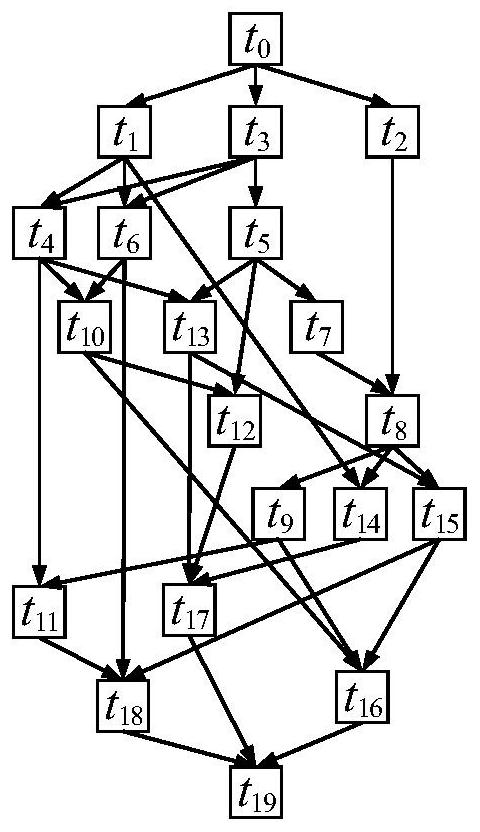Scheduling optimization method for multi-mode resource-constrained projects using two-stage genetic algorithm
A genetic algorithm and resource-constrained technology, applied in genetic rules, resources, computing, etc., can solve problems that cannot be applied to large-scale problems, and the calculation time of precise algorithms is long, so as to enhance the ability of neighborhood search and improve the search ability , the effect of improving the overall efficiency
- Summary
- Abstract
- Description
- Claims
- Application Information
AI Technical Summary
Problems solved by technology
Method used
Image
Examples
Embodiment Construction
[0133] The present invention will be described in further detail below with reference to the accompanying drawings and embodiments, but the present invention is not limited to the following embodiments.
[0134] A project consists of 20 tasks numbered from 0 to 19. The task structure is the timing relationship as follows figure 2 shown, where t 0 and t 19 It is an artificially added virtual task, that is, it does not occupy the project duration or resources, t 1 to t 18 The executable mode of , as well as the time required for execution in this mode, the number of updatable resources occupied and the number of non-updatable resources are shown in Table 1. In this project, the usable amount of updateable resource 1 at any time is 12, the usable amount of updateable resource 2 at any time is 13, and the usable amount of non-updatable resource 1 in the entire project duration is 70, and the usable amount of non-updateable resource 1 is 70. Resource 2 has 85 available for the...
PUM
 Login to View More
Login to View More Abstract
Description
Claims
Application Information
 Login to View More
Login to View More - R&D
- Intellectual Property
- Life Sciences
- Materials
- Tech Scout
- Unparalleled Data Quality
- Higher Quality Content
- 60% Fewer Hallucinations
Browse by: Latest US Patents, China's latest patents, Technical Efficacy Thesaurus, Application Domain, Technology Topic, Popular Technical Reports.
© 2025 PatSnap. All rights reserved.Legal|Privacy policy|Modern Slavery Act Transparency Statement|Sitemap|About US| Contact US: help@patsnap.com



